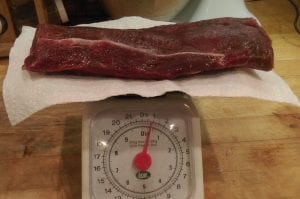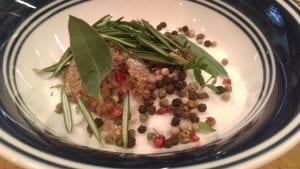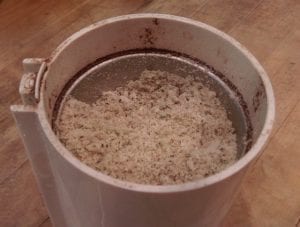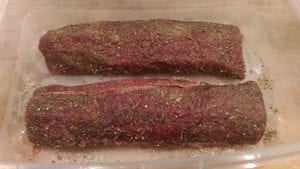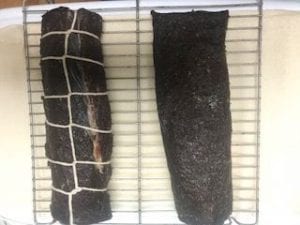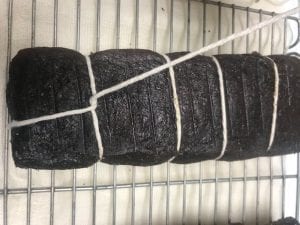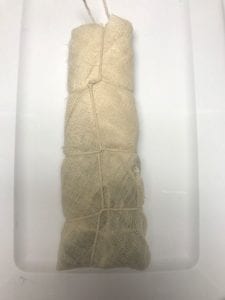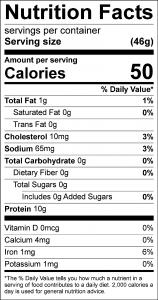Venison Bresaola- Beautifully Cured Meat (Charcuterie)
Charcuterie (shar-coot-ehr-ee) is a French word that encompasses many cured and cooked meats that are often served as appetizers. Many favorite processed meat products, such as bacon, sausages, hot dogs, ham, salami, and pâtés are all considered charcuterie. These techniques were used to preserve meat before refrigeration was readily available and have persisted because they taste so good! In Italy, bresaola is traditionally made from a lean eye of the round cut of beef, and it works deliciously with venison. The eye of round cut can be found on the inside of the hind leg quarter between the top and bottom rounds. It is easily separated out and is similar in shape and size to the loin, which also works well for making bresaola. This recipe takes a few weeks to complete and is well worth the wait!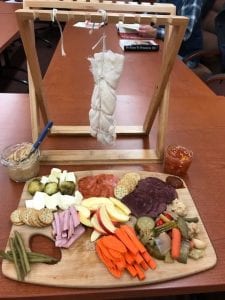
Venison Bresaola
- Two 1.5 lb. venison loins (backstrap) or eye of round venison cuts, trimmed of silver skin
- ¼ cup kosher salt
- 2 Tbsp. sugar
- 1 Tbsp. whole peppercorns
- 1 Tbsp. fresh rosemary leaves
- 2 tsp. fresh thyme leaves
- 2 fresh sage leaves
- 4-6 juniper berries
- Weigh each piece of venison and record the weight to the closest gram or ounce weight.
- Combine all of the spices in a coffee grinder and pulse a few times to create a granular powder spice mixture. It’s okay if there is just a little residue coffee flavor in there too.
- Rub the spice mixture all over the meat until well coated. Place the meat in a non-reactive container, such as a glass or ceramic baking dish or food-grade plastic storage container. Cover and refrigerate the meat for 5 days. Drain the meat. Put back in the refrigerator for another 5 days.
- Tie the meat with butcher twine using a running butcher’s knot (slip knot). Wrap the meat in a double layer of cheesecloth and hang the meat in a cool (60°F), dark location with about 60-70 percent humidity for about 2 weeks.
- Weigh the meat. It should weigh 30% less than the beginning weight. So a 24 oz. piece should weigh about 16.8 ounces. The meat should feel firm to the touch and be very uniform and smooth when sliced.
- There may be a few white specks of mold on the outside of the meat after hanging which can be wiped off with a wine infused cloth. White mold is similar to some cheese molds and in small amounts if fine, but if there is any black mold or excessive mold, do not eat.
- There should not be an offensive odor to the meat.
- If the outside is dark and the inside has an appearance or texture of raw meat, then it did not dry uniformly and should not be consumed.
- If the meat has lost more than 30% weight it can become hard and difficult to chew. Simply shave it very thin or even grate it to use as a topping. It is still safe to eat.

